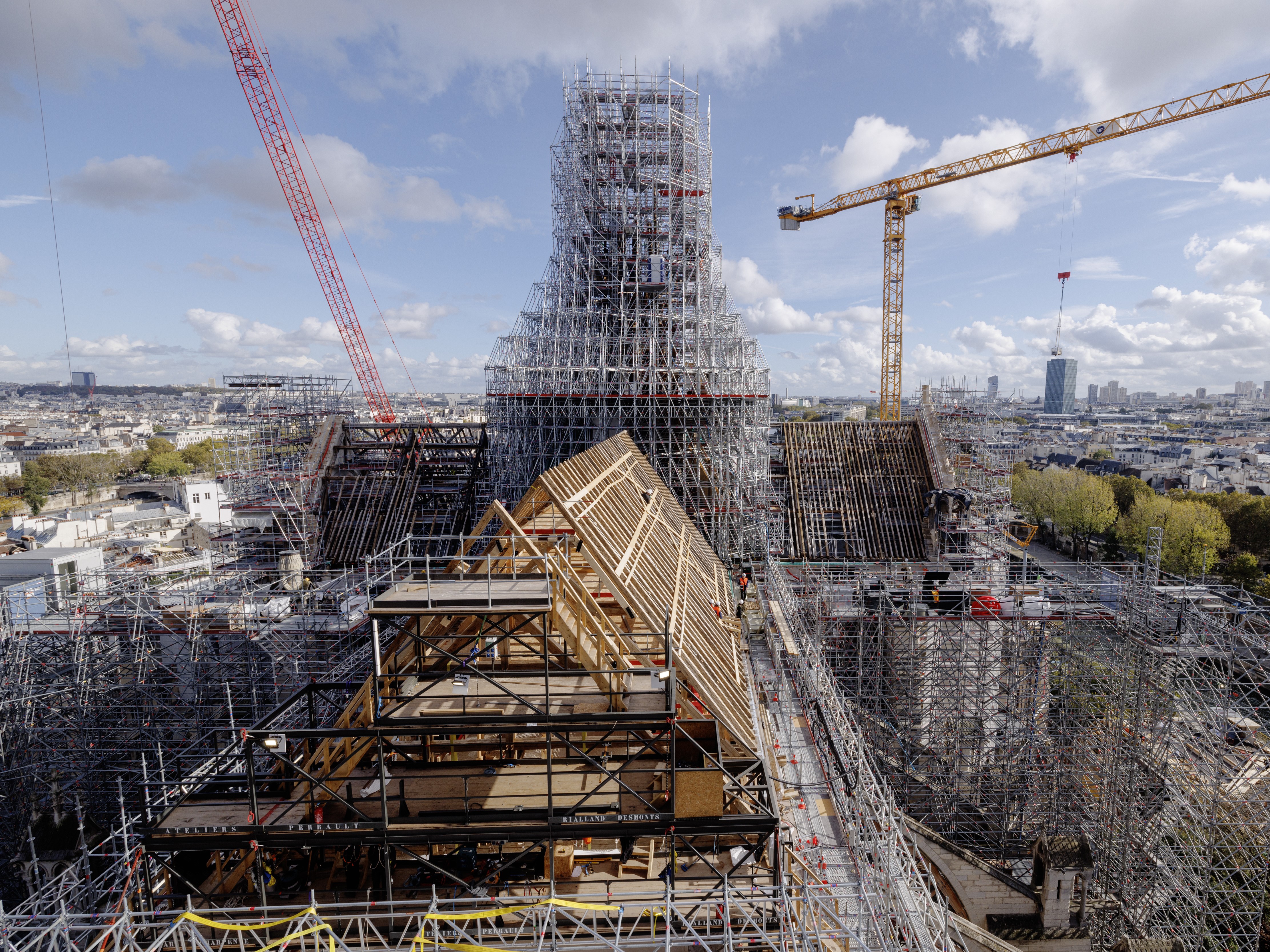From iconic landmarks to sustainable sanctuaries: how projects around the globe are using certified timber
Timber is more than a building material; it tells a story. It’s a story that begins in the forest and continues into homes, schools, places of worship, and public buildings that define how we live and connect.
From iconic landmarks to sustainable sanctuaries: how projects around the globe are using certified timber
26 May 2025 Sustainable construction
Timber is more than a building material; it tells a story. It’s a story that begins in the forest and continues into homes, schools, places of worship, and public buildings that define how we live and connect.
Timber also plays a unique role in biophilic design, bringing the natural warmth, texture, and rhythm of the forest into our built spaces. Research shows it is helping people feel more connected, calm, and well.
What gives that story its strength is trust, and that’s where certification comes in. It provides confidence that the wood has been responsibly sourced from forests managed with care for biodiversity, future supply, and community benefit and that the supply chain is traceable.
As World Conference on Timber Engineering (WCTE) 2025 in Brisbane approaches, we’re taking the opportunity to showcase real-world examples of how certified timber is shaping the future of construction around the world.
In this article, we highlight two different but unique projects, both of which demonstrate timber’s potential to deliver social, cultural, and environmental value when it’s used with care and purpose.
A cultural icon reborn: Notre-Dame Cathedral and PEFC Project Certification
 Photo credit: Patrick Zachmann Magnum Photos
Photo credit: Patrick Zachmann Magnum Photos
When a devastating fire tore through Notre-Dame de Paris Cathedral in April 2019, it wasn’t just a building that was lost.
It was a deep cultural and spiritual symbol, a landmark of craftsmanship, heritage, and resilience.
For many, the heart of the cathedral was the ancient timber frame, constructed with oak from French forests centuries ago.
 Photo credit: David Bordes
Photo credit: David Bordes
The decision to rebuild using traditional materials, including timber, raised critical questions: Where would the wood come from?
Would it be responsibly sourced? Could a 21st-century reconstruction honour the past, while meeting the environmental expectations of the present? PEFC project certification was a key part of the solution.
Last year PEFC announced that the oak used for the restoration of Notre-Dame had achieved project-level certification, verifying that all timber was sourced from sustainably managed French forests, and that the entire supply chain met PEFC’s environmental, social, and legal requirements.
This certification provided assurances that the selected oak trees were harvested from forests, without compromising forest regeneration or ecosystem health. A fully traceable chain of custody certification process documented every stage of the timber journey from forest to sawmill, to artisan workshops in France, and finally to the construction site on the Île de la Cité (an island in the River Seine).
This project highlighted just how critical certification can be in projects under the highest level of public and political scrutiny where transparency, traceability, and ethical sourcing are non-negotiable.
Designing for wellbeing: timber in education at Ickburgh SEN School
 Photo credit: Stora Enso
Photo credit: Stora Enso
Across the Channel in East London, a lesser-known project demonstrates timber’s capacity to shape lives and support wellbeing. Ickburgh School, designed by Avanti Architects, provides education and care for students with complex and severe learning needs. Its design was centred around creating a calming, intuitive environment that responds to sensory sensitivities.
The use of timber plays a vital role throughout the school’s interior. Exposed timber ceilings, acoustic timber panels, and soft, tactile finishes help create spaces that feel safe, warm, and welcoming reducing stress and enhancing comfort for students and staff alike.
This project illustrates the kind of values we often associate with responsibly sourced timber: connection to nature, improved indoor environments, and materials that support emotional and physical wellbeing.
Such a project illustrates a growing design movement where the performance of timber isn’t measured only by strength or carbon metrics, but also by how it makes people feel – biophilia.
By choosing certified timber, architects and builders working on future education projects can add a vital layer of assurance ensuring that the positive intent behind a project is matched by positive action throughout the supply chain.